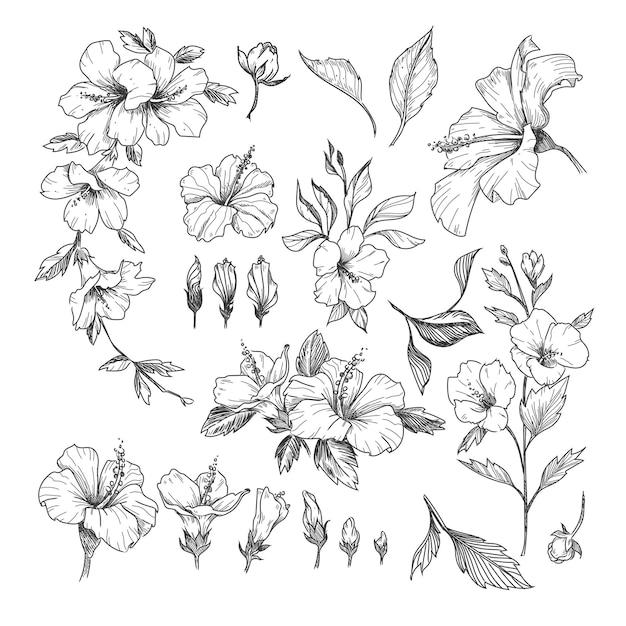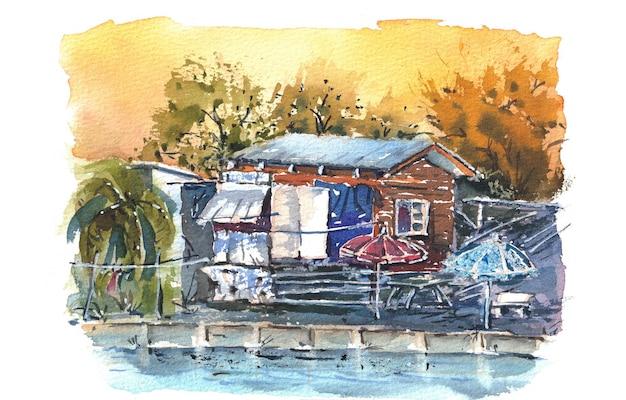Are you a budding digital artist looking to create stunning artwork in Adobe Photoshop? One crucial consideration that often arises is the resolution at which you should be drawing. With a plethora of options available, it can be overwhelming to decide the best resolution for your artistic endeavors. But fret not! In this blog post, we will demystify the world of resolutions and help you make an informed decision.
From understanding what resolution means and how it affects the quality of your artwork to determining the ideal size and DPI (dots per inch), we’ll delve into all the essential details. Whether you’re dealing with digital art or scanning traditional photos, we’ve got you covered. So, if you’re ready to unlock the secrets of finding the perfect resolution for your artistic journey, let’s dive right in!
1. Finding the Perfect Resolution for Drawing in Photoshop
Drawing pictures in Photoshop can be both a delightful and challenging experience. One of the key decisions you’ll need to make is choosing the best resolution for your artwork. In this subsection, we’ll explore the factors to consider when determining the ideal resolution for drawing pictures in Photoshop.
1.1 Why Resolution Matters in Photoshop
When it comes to digital artwork, resolution plays a crucial role in maintaining the quality and clarity of the final image. Resolution refers to the number of pixels in your image, determining its sharpness and level of detail. So, selecting the appropriate resolution is like choosing the perfect recipe for your artistic masterpiece.
1.2 Let’s Get Down to Pixels
Pixels, those tiny little squares that make up digital images, have a significant impact on your artwork. The number of these little guys can determine how fine or coarse your lines appear, whether your gradients are smooth or choppy, and even how well your shapes blend together seamlessly. In other words, pixels bring all the magic to your digital canvas.
1.3 Striking a Balance: Clarity vs. File Size
Now, let’s dive into the resolution options available in Photoshop. You might be tempted to crank up the resolution to the highest setting possible, thinking it will result in the best image quality. While higher resolution does provide more detail, it also increases the file size of your artwork. So, it’s essential to find a balance between clarity and practicality.
1.4 Web or Print: Know Your Purpose
Consider the purpose of your artwork. Are you creating it for online display or printing it out on paper? The answer will have a significant influence on the resolution you choose. If it’s for online use, a lower resolution is usually sufficient because screens have a limited number of pixels. However, for print, you’ll want a higher resolution to ensure the art looks crisp and vibrant on paper.
1.5 The Sweet Spot: Resolution Recommendations
For web use, a resolution of 72 pixels per inch (ppi) is generally considered standard. This resolution strikes a good balance between image quality and file size. On the other hand, if you’re aiming for print, 300 ppi is usually the way to go. This higher resolution will make your artwork appear sharp and detailed when printed on paper.
1.6 Scaling Up? Beware of Pixels!
Remember, scaling up an image in Photoshop doesn’t magically increase its resolution. You can’t just add more pixels to an existing image. Scaling up will only stretch the existing pixels, resulting in a pixelated and blurry mess. So, always start with a resolution that matches your intended output size to maintain the best quality.
1.7 Sharing Is Caring: Selecting the Right Format
When sharing your artwork online, consider the file format you’ll use. For web display, JPEG is a popular and widely supported format that maintains a good balance between file size and image quality. However, when sending your artwork to a print shop, consider using TIFF or PSD for better color accuracy and preservation of details.
Now that we’ve covered the ins and outs of choosing the best resolution for drawing pictures in Photoshop, you’re armed with the knowledge to create stunning digital masterpieces. So go forth, embrace your creativity, and paint the pixels of your imagination like a true digital Picasso!
FAQ: What Resolution is Best to Draw Pictures in Photoshop
What resolution should I use for drawing in Photoshop
When it comes to choosing the resolution for your artwork in Photoshop, it depends on your purpose. For digital art intended for online viewing or social media, a resolution of 72 pixels per inch (ppi) is sufficient. However, if your art is intended for print, you should opt for a higher resolution, typically between 300-600 ppi.
What size should I draw in
The size you should draw in depends on your intended output. If you’re creating art for online platforms, such as websites or social media, you can work with standard dimensions like 1920 pixels by 1080 pixels (1080p). For print, you’ll need higher dimensions, such as 8.5 inches by 11 inches for standard letter size. Remember to consider the required resolution alongside the dimensions for optimal results.
Is 600 dpi good for digital art
Yes, 600 dots per inch (dpi) is excellent for digital art, especially if you’re planning to print your work. This high-resolution setting ensures that your artwork will have incredible detail and sharpness when printed.
Does changing DPI affect the quality of my artwork
No, changing the DPI (dots per inch) in Photoshop does not harm the quality of your artwork. The DPI setting primarily determines the printing size and not the underlying quality of your creation. So, feel free to adjust the DPI to suit your specific needs.
Is 600 dpi good for photos
Absolutely! 600 dpi is fantastic for photos, particularly if you want to preserve tiny details and achieve stunning print results. With 600 dpi, your printed photos will appear incredibly crisp and lifelike.
What resolution is recommended for scanning photos
When scanning photos, it is generally recommended to use a resolution of 300 dpi. This setting ensures that you capture enough detail without excessively large file sizes. With 300 dpi scans, you’ll have high-quality images suitable for both digital use and printing.
Is 300 dpi suitable for digital art
Yes, 300 dpi is perfectly suitable for digital art, especially if you plan to showcase your work online. This resolution provides a good balance between file size and image quality, ensuring your art looks fantastic on screens.
How do I make an image 300 dpi in Photoshop
To achieve a resolution of 300 dpi for your image in Photoshop, you can follow these steps:
- Open your image in Photoshop.
- Navigate to the “Image” menu and select “Image Size.”
- In the dialog box that appears, uncheck the “Resample” option.
- Enter 300 in the “Resolution” field.
- Ensure that the unit is set to “pixels/inch.”
- Click “OK” to apply the changes.
Is 72 ppi the same as 300 dpi
No, 72 pixels per inch (ppi) is not the same as 300 dots per inch (dpi). While both refer to the density of pixels, they have different purposes. 72 ppi is typically used for digital display, whereas 300 dpi is used for high-quality print output. So, they serve different needs and should not be confused.
Is 300 dpi considered high resolution
Yes, 300 dots per inch (dpi) is considered high resolution, especially for print. It ensures that your images appear sharp, detailed, and professional when printed.
How large can you print a 300 dpi image
With a 300 dpi image, you can print it at various sizes. As a general guideline, a 300 dpi image can be printed at its original size or scaled up based on the number of pixels it contains. For example, if your image is 3000 pixels by 2400 pixels, it can be printed at 10 inches by 8 inches without losing any quality.
Should I scan photos at 300 or 600 dpi
If you intend to use the scanned photos primarily for printing, scanning them at 600 dpi is a good choice. However, if the photos are solely for digital use, 300 dpi is sufficient. Keep in mind that higher dpi results in larger file sizes, so consider storage limitations when making your decision.
What resolution do artists typically use
Artists often use a resolution of 300 dpi for their digital artwork, as it provides a balance between detail and file size. This resolution ensures that their prints retain the original quality and can be reproduced faithfully.
What is 300 dpi in pixels
When it comes to measurements, 300 dots per inch (dpi) is equivalent to 300 pixels per inch (ppi). Therefore, if you have an image that is 1 inch by 1 inch and set at 300 dpi, it will have dimensions of 300 pixels by 300 pixels.
Is 300 dpi or 600 dpi better
The choice between 300 dpi and 600 dpi depends on your specific needs. For most purposes, including digital art and standard printing, 300 dpi is more than sufficient. However, if you desire extremely high-quality prints with intricate details, 600 dpi might be a better option.
What is a good dpi for drawing
For drawing digitally, a resolution of 300 dpi is generally considered good. This resolution allows you to maintain fine details and provides an excellent balance between quality and file size. However, you can experiment with different resolutions to find what works best for your style and preferences.
Which dpi is best for digital art
While the “best” dpi for digital art can vary depending on the specific requirements and preferences, a commonly recommended resolution for digital art is 300 dpi. This allows for high-quality prints and ensures that your artwork retains its fine details and clarity.
Remember, selecting the right resolution and dimensions in Photoshop is crucial for achieving the desired output quality. Consider the final destination of your artwork, whether it’s online or in print, and adjust your settings accordingly. Now that you have a better understanding of resolution and dpi, go forth and create amazing art with confidence!

